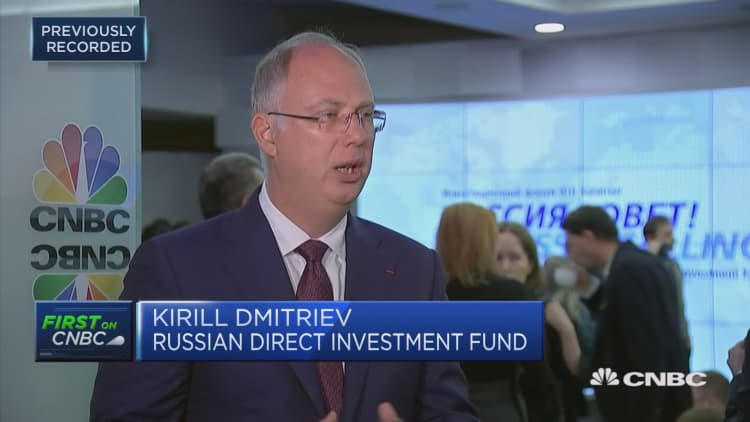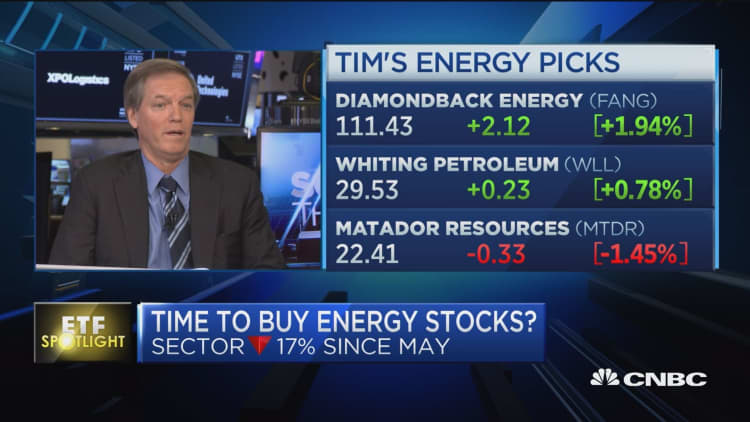
Oil reversed course and rose as much as 3 percent on Thursday, after industry sources said Russia had accepted the need to cut production, together with OPEC ahead of its meeting next week.
Prices, however, were still set for its biggest one-month fall in November since the depths of the financial crisis in 2008, having lost about 22 percent so far.
A seemingly relentless rise in crude supply from the United States, now the world's top producer, together with Saudi Arabia's insistence that it will not cut output on its own to stabilize the market, earlier sent U.S. crude below $50 for the first time in over a year
But prices rebounded after sources said Russia would consider join an effort to cut alongside Saudi Arabia and other members of the Organization of the Petroleum Exporting Countries.
U.S. crude futures ended Thursday's session up $1.16, or 2.3 percent, at $51.45 a barrel, after earlier dropping to $49.41. Brent crude futures rose 75 cents, or 1.3 percent, at $59.51 a barrel, off an earlier session low of $57.50.

The Russian Energy Ministry held a meeting with the heads of domestic oil producers on Tuesday, before a gathering in Vienna of OPEC and its allies on Dec. 6-7.
"The idea at the meeting was that Russia needs to reduce. The key question is how quickly and by how much," said one source familiar with the talks between Russian oil firms and the ministry.
The market now expects that a cut of 1 million barrels per day would be possible from OPEC and its allies, said John Kilduff, partner at Again Capital in New York.
Russian President Vladimir Putin, whose country is the world's second biggest oil producer, said on Wednesday he was in touch with OPEC and ready to continue cooperation on supply if needed, but he was satisfied with an oil price of $60.
Investors in commodity markets are looking ahead to the meeting of leaders of the Group of 20 nations (G-20), the world's biggest economies, on Nov. 30 and Dec. 1, with the U.S.-China trade war a key focus.
"We have seen huge increases in supply and the demand picture is in question. However, we might see some movement on global trade issues at the G-20 meeting which starts on Friday," said Michael McCarthy, chief strategist at CMC Markets and Stockbroking.
Anticipation of the meeting may also be driving prices higher, said Kilduff of Again Capital, adding that traders are wary of being short ahead of the meeting.

U.S. stockpiles were expected to build again in the latest week, traders said, citing data from energy information service Genscape. Crude stockpiles at the Cushing, Oklahoma hub rose 771,924 barrels since Nov. 23, traders said on Thursday, citing a weekly Genscape report.
U.S. oil reserves in 2017 exceeded a 47-year-old record when they increased 6.4 billion barrels, or 19.5 percent, to 39.2 billion barrels, the government said.
"WTI oil is now trading right around the $50 per barrel level, a price last seen well over a year ago, as the current oversupply situation has now manifested itself in 10 consecutive weekly increases in U.S. oil inventories," said William O'Loughlin, investment analyst at Australia's Rivkin Securities.
"We have seen huge increases in supply and the demand picture is in question. However, we might see some movement on global trade issues at the G-20 meeting which starts on Friday," said Michael McCarthy, chief strategist at CMC Markets and Stockbroking.

